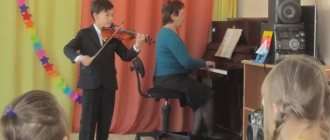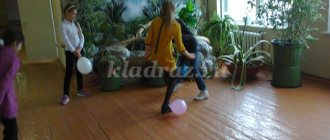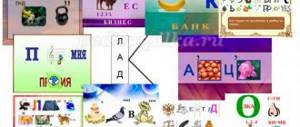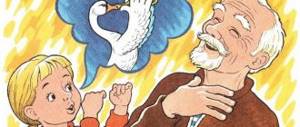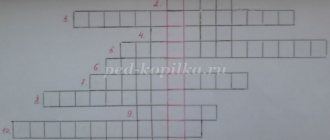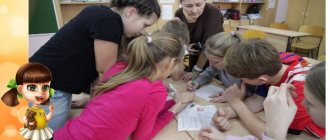All-Russian Internet competition “Presentation”
The introduction of computer technology has affected all spheres of human activity, including the education system. Multimedia presentations have begun to be widely used in classes in all educational institutions. In modern education, presentation has begun to occupy one of the important places in the work of teachers. With its help, it became possible to present educational and developmental material as structured information, subject to algorithmic order. In turn, creating presentations required the modern teacher to have some skills in working with equipment and computer programs.
In addition to conventional teaching tools, presentations have significantly expanded the possibilities of early development of a child in kindergarten and the successful consolidation of educational material in elementary school . The use of presentations made it possible to show life situations that are difficult or impossible to see in everyday life. For example, the process of launching a ship or complex experiments that cannot be demonstrated in chemistry lessons.
Presentations can be made for the development of children and schoolchildren, for public speaking in front of other teachers, for presenting one’s portfolio, serving as advice on involving parents in the educational process, as support when conducting a lesson or activity in a preschool educational institution, and for many other purposes.
Goals and objectives of the competition
- Providing opportunities for teachers to realize their creative potential and individuality.
- Motivation for the use of information and computer tools in the educational process.
- Formation of computer literacy and information culture among educators.
Subject of the competition
The subject of the competition is presentations prepared in MS PowerPoint or MS Word.
Criteria for evaluating materials submitted to the competition for teachers.
- Ergonomics, combination of color palette, ratio of text and graphic parts of the presentation.
- Structure, logic, consistency, ease of perception and assimilation of information.
- Practical significance, pedagogical value and attractiveness of the presented material.
- Isolating the main ideas from the general content of the project.
- Availability of useful information about the object of study in a convenient form.
Dear teachers! We wish you success in your creative activity and participation in the competition!
- Participate
- Position
Requirements for the content of work
According to the organizers of the competition, the presentation should be educational and informative. The competition presentation should help teachers conduct lessons, classroom hours and extracurricular activities dedicated to individuals or groups of individuals. The presentation should be meaningful enough so that a site visitor can build an independent lesson using the presentation.
The organizers of the competition believe that the presentation must include photographs of an outstanding person, his biography, as well as an accessible story about why this person can be considered a great person.
The author independently chooses the topic of the presentation and its hero. We don't insist that you only talk about positive people.
We hope that in this competition we will be able to learn new names, undeservedly forgotten, as well as obtain new information about famous people.
The audience for your presentation can be of any age.
Games and competitions on May 9
VICTORY
Participants are divided into teams of 3-4 people. Each of the teams must decipher the word “Victory” more interesting than the others, for example, p - feat, o - brave, b - fighters, f - united, d - in spirit, a - activists. And there is a prize for the most beautiful transcript.
Brave tankers
Participants are divided into teams of 4-5 people. Each team must build its own tank, figure out what to shoot with and demonstrate the shot. Whoever comes up with the most interesting improvisation will receive the title of brave tankers.
Dance and song battle
The players are divided into two teams. One team sings any well-known war song, and the other must at the same time show the spoken words with actions, acting out a kind of skit based on the text of the song. Then the teams change roles. The winning team that completed the task better is determined by audience voting or by the strength of applause.
Parade
Participants are divided into teams. The task of each of them is to go from start to finish in formation. But at the same time you need to follow the rules: keep pace and take first two steps forward, and then one back. The team that completes the task faster becomes the winner and is divided into two new teams. Game continues. The fastest one wins. He is awarded a symbolic medal.
General
From the total number of participants, one is chosen - the “general”. He turns to the wall, and the others form a formation at a sufficient distance from him. Their task is to approach the general and touch him. But at the moment when the “general” turns around, everyone must stand at attention, saluting. Players can move only when the “general” does not see them. The first one to touch becomes the winner and the new “general”.
Pathfinder Scout
Each participant takes a piece of paper, places it on the floor, places their foot on top, traces it with a pencil and cuts out their footprint. Then the presenter collects all the “traces”, mixes them and hands them to the driver. The driver must correctly determine where whose footprint is and distribute them to the owners. The most observant tracker/scout who makes no mistakes wins.
War films
Participants are divided into teams of 3-4 participants. Each team is given the title of a war film and the team must show this film in every possible way. Films: “Only Old Men Go to Battle”, “The Adventures of Sergeant Tsibuli”, “Officers” and so on. There is a prize for the most striking and spectacular performance.
Battle of the War Choirs
Participants are divided into two teams - two choirs. Each choir, in turn, must sing a war song or a song from war films, for example, “Darkie.” The team that sings better, louder and more sonorously deserves a prize.
Orders
Several pairs of participants compete. Each pair receives a prop - a pack of ordinary sewing pins. At the leader’s signal, the players begin to attach these pins (“orders”) to each other’s clothes. The more “orders” the participants managed to attach, the greater their chances of winning. The most “decorated” couple wins.
Shoulder straps
A drawing is installed or hung in front of the participants, which depicts a jacket with only one shoulder strap. The players are blindfolded. At the presenter’s signal, they take turns approaching the image and drawing the shoulder strap where, in their opinion, it should be. The winner is the one who placed the shoulder straps in the picture more accurately. He becomes the winner and receives comic paper shoulder straps as a prize.
Goals and objectives of the competition
Providing assistance to teachers, pedagogues, class teachers in conducting lessons in subjects (history, chemistry, biology, etc.), as well as in conducting classroom hours by creating an open database of educational presentations on the topic “Great people and memorable events of Russia.”
Identifying creative and talented teachers and students among community members, disseminating their experience, and encouraging their work.
Attracting the attention of the teaching community and students to issues of patriotic education by telling stories about outstanding people of Russia.
